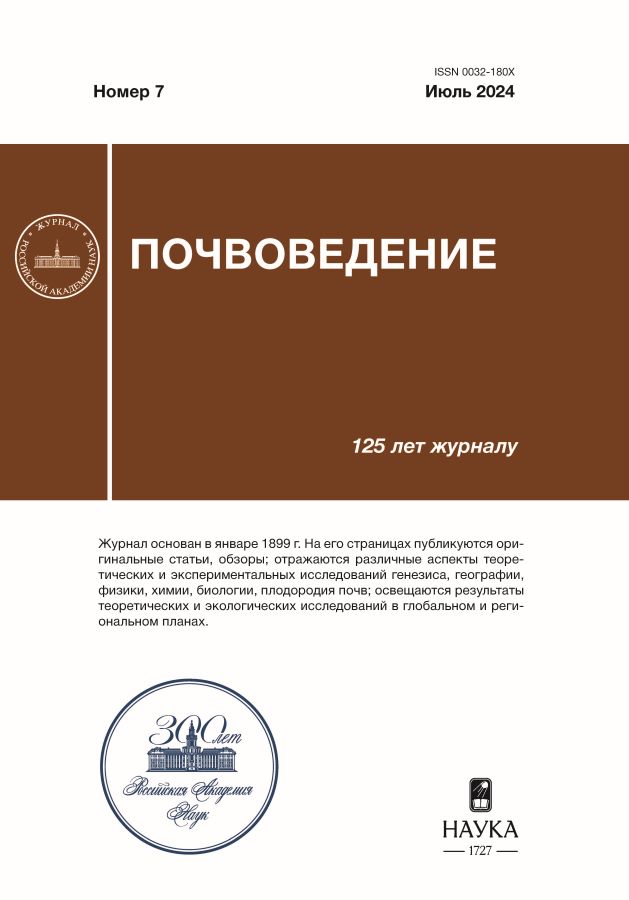Problems of Estimation of Microbial Biomass in Soddy-Podzolic Soils (Forests of the Protected Areas of Moscow Region)
- Autores: Chernova O.V.1, Duschanova K.S.2, Petrosyan A.A.2, Khomutova T.E.2
-
Afiliações:
- Severtsov Institute of Ecology and Evolution of the Russian Academy of Sciences
- Institute of Physicochemical and Biological Problems of Soil Science of the Russian Academy of Sciences
- Edição: Nº 7 (2024)
- Páginas: 1019-1033
- Seção: БИОЛОГИЯ ПОЧВ
- URL: https://kld-journal.fedlab.ru/0032-180X/article/view/666622
- DOI: https://doi.org/10.31857/S0032180X24070078
- EDN: https://elibrary.ru/XUOXHX
- ID: 666622
Citar
Texto integral
Resumo
The carbon content of microbial biomass in the soil serves as one of the indicators of its biological activity and is often used in assessing the anthropogenic impact and natural changes on the soil microbiome. Significant spatial and temporal variation of the indicator at the level of ecosystems, soil typological units, land use types, etc. makes it difficult to interpret the data obtained during mass monitoring. The aim of the study is to determine the background values of microbial biomass content in the surface sub-litter layer of soils of protected forests of the Moscow region. A reconnaissance survey of soils of the podzolic series, which are typical for the region and diverse in genesis and granulometric composition, autonomous or with a little additional moisture, formed under mixed southern taiga forests in four protected natural territories, was carried out. The biological activity of soils was estimated by the amount of microbial biomass determined by two methods: by the content of phospholipids and substrate-induced respiration of microbial communities. Significant spatial variability of microbial biomass content was noted both at the site level and at the ecosystem level, and for similar by classification and granulometric composition autonomous soils, it is comparable with local variability within the experimental sites. It is shown that the value of microbial biomass depends mainly on the type of the humidity regime and the granulometric composition, which largely determines the sorption capacity of the soil, and its provision with biophilic elements, and also correlates with the richness of the ground cover that provides the soil microbiome with nutrients. It is shown that in order to obtain correct results for mass monitoring of soil biological activity, unification of the methodology and depth of sampling in the soils of background and anthropogenic-transformed ecosystems is of great importance.
Texto integral
##article.viewOnOriginalSite##Sobre autores
O. Chernova
Severtsov Institute of Ecology and Evolution of the Russian Academy of Sciences
Autor responsável pela correspondência
Email: ovcher@mail.ru
Rússia, Moscow
K. Duschanova
Institute of Physicochemical and Biological Problems of Soil Science of the Russian Academy of Sciences
Email: ovcher@mail.ru
Rússia, Pushchino
A. Petrosyan
Institute of Physicochemical and Biological Problems of Soil Science of the Russian Academy of Sciences
Email: ovcher@mail.ru
Rússia, Pushchino
T. Khomutova
Institute of Physicochemical and Biological Problems of Soil Science of the Russian Academy of Sciences
Email: ovcher@mail.ru
Rússia, Pushchino
Bibliografia
Arquivos suplementares














